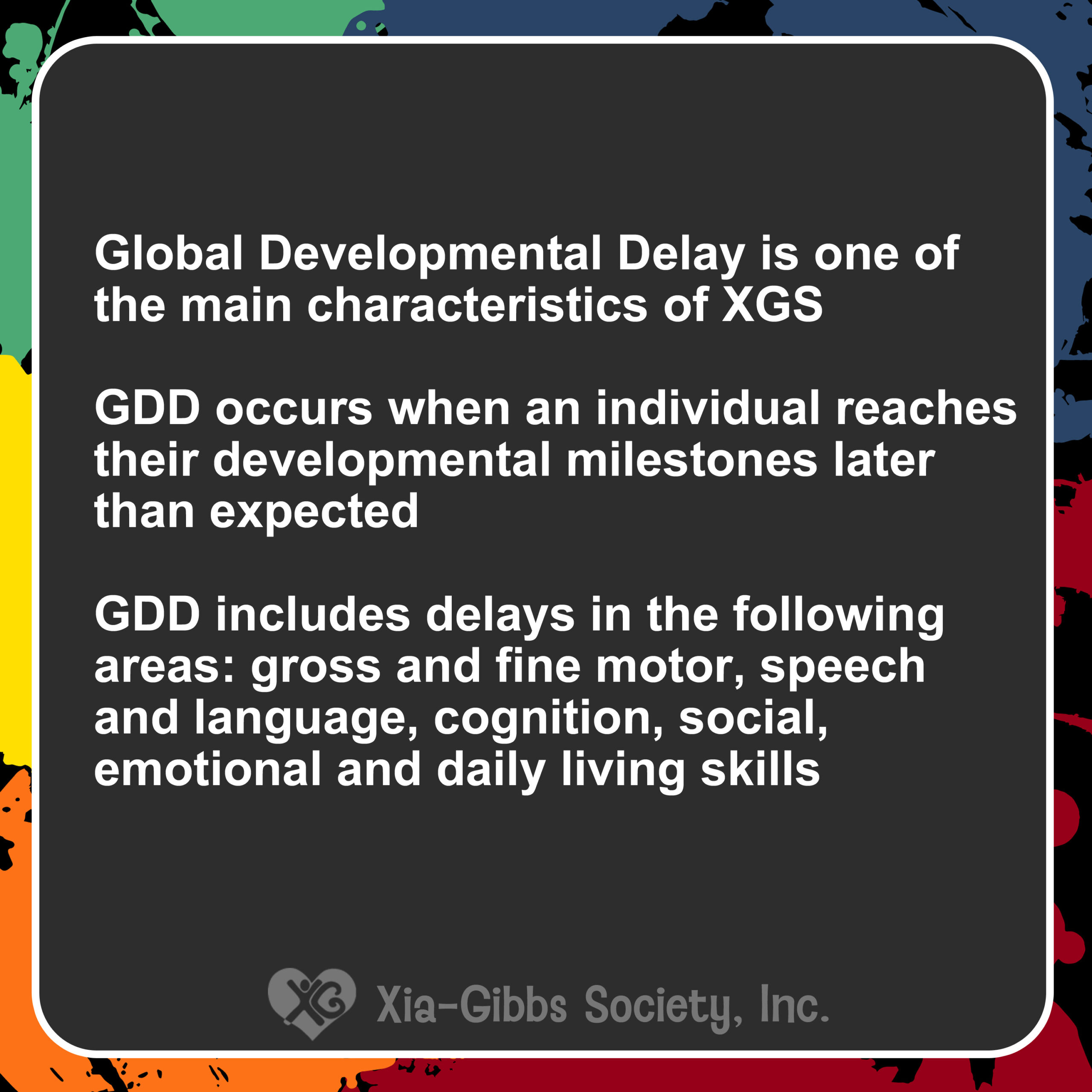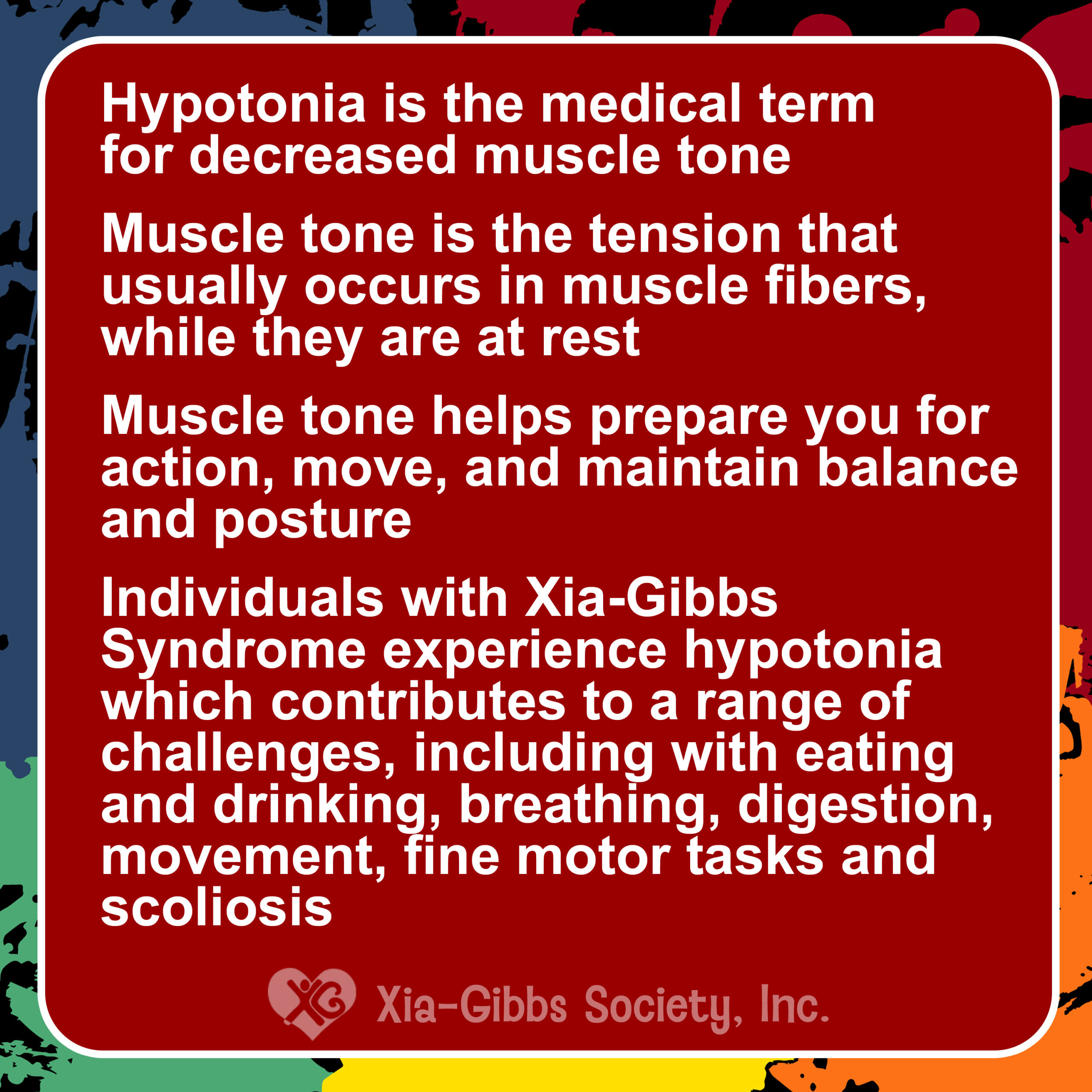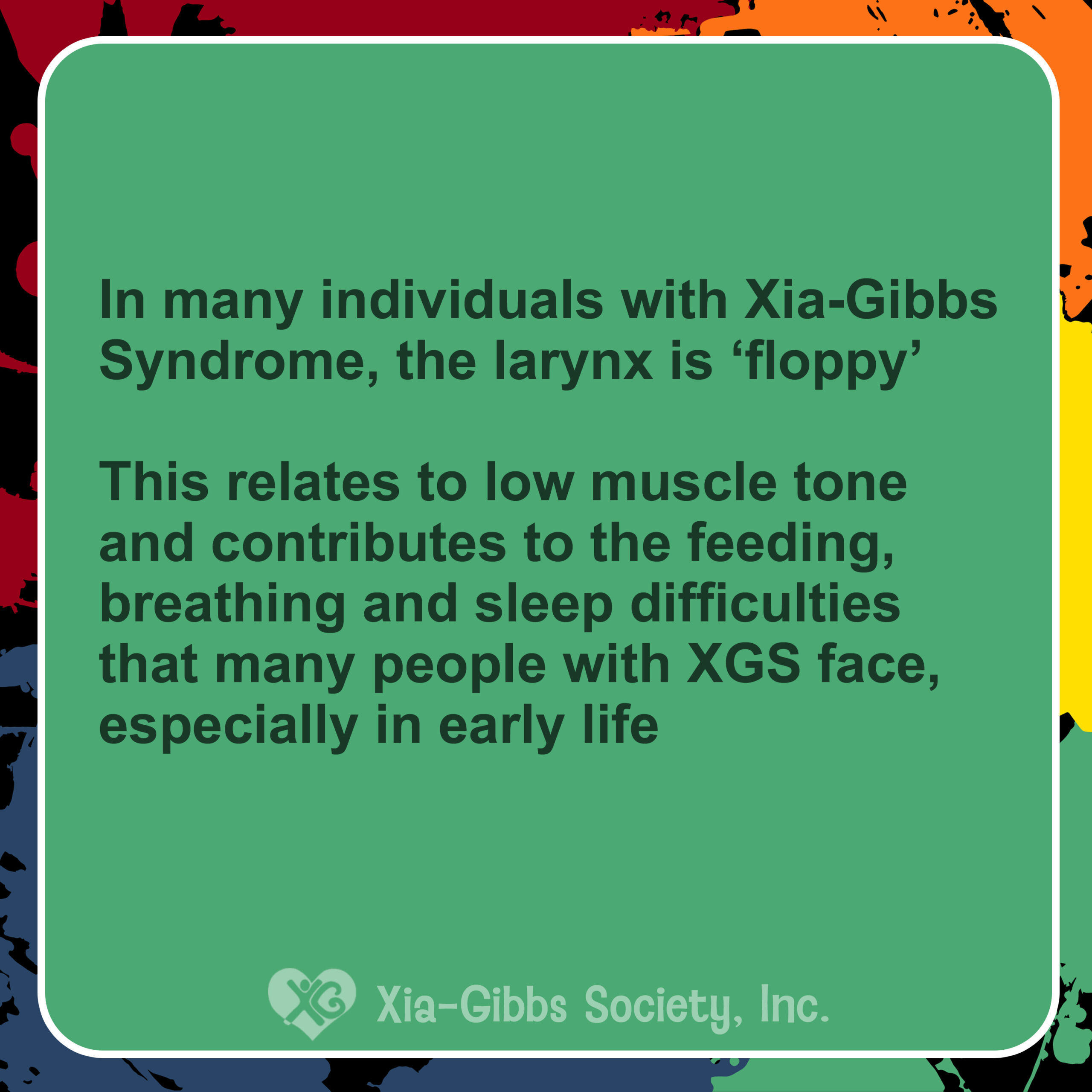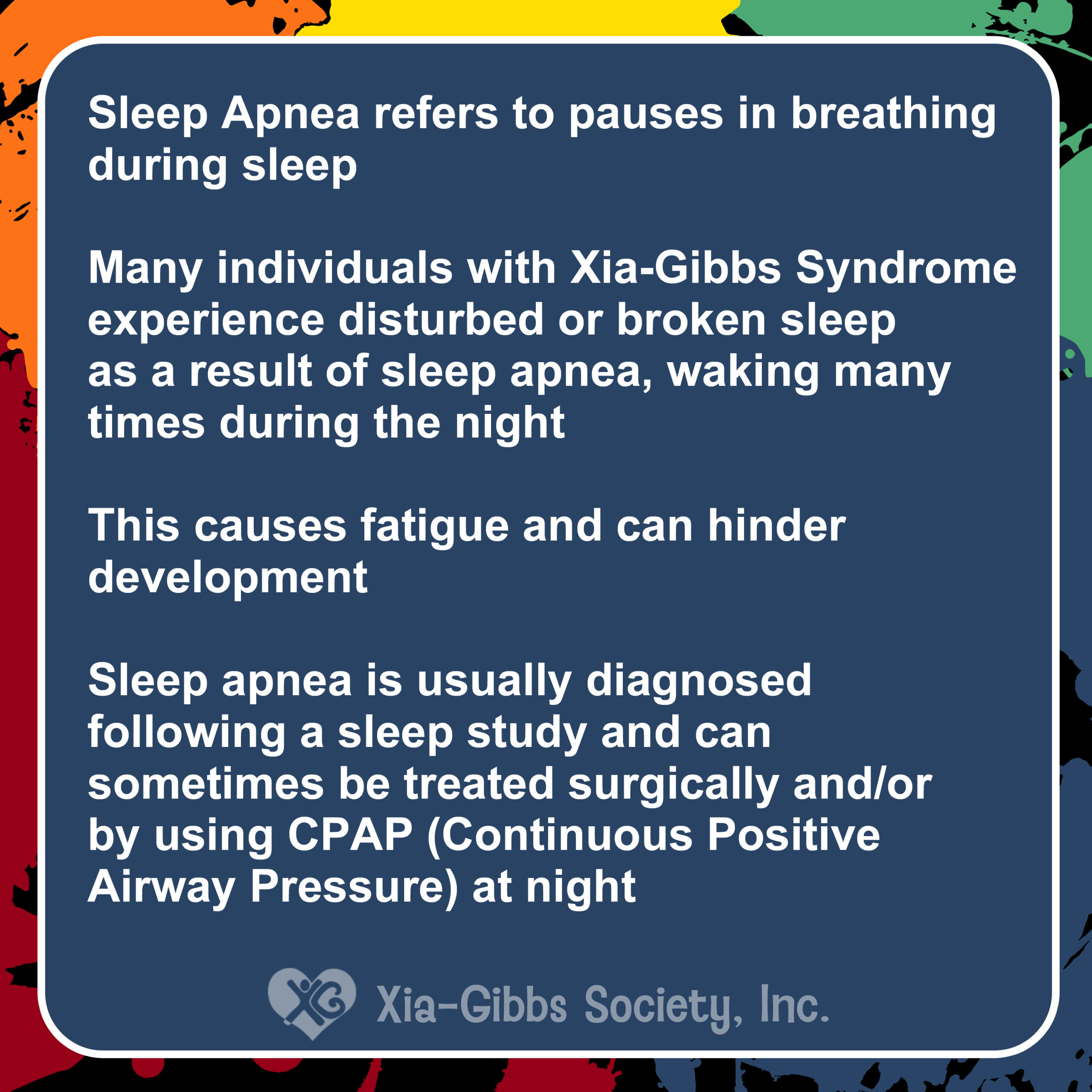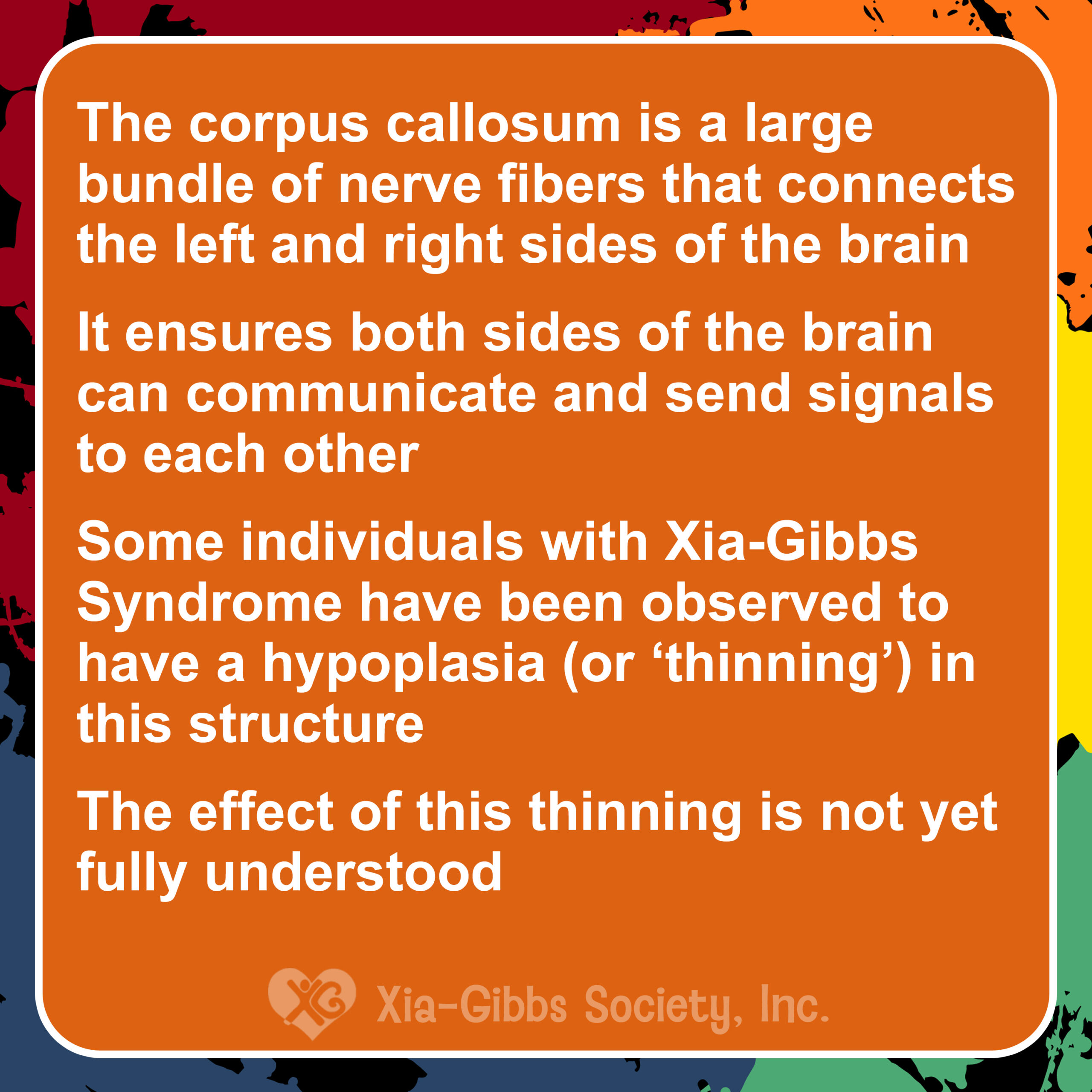GLOBAL DEVELOPMENTAL DELAY
Global Developmental Delay (GDD) is one of the main characteristics of Xia-Gibbs Syndrome.
GDD describes when individuals are significantly delayed (reach developmental milestones later than usual) in all areas of development.
This includes delays in daily living skills, in gross and fine motor, speech and language, cognitive, social and emotional areas of development.
hypotonia
Hypotonia is the medical term for decreased muscle tone.
Muscle tone is the tension that usually occurs in the muscle fibers, while they are at rest. Muscle tone helps prepare you for action and maintain balance and posture.
Individuals with Xia-Gibbs Syndrome experience hypotonia which contributes to a range of challenges including with eating and drinking, breathing, digestion, movement, fine motor tasks and scoliosis.
laryngomalacia
In many individuals with Xia-Gibbs Syndrome, the larynx is ‘floppy’.
This relates to low muscle tone and contributes to the feeding, breathing and sleep difficulties that many people with XGS face, especially in early life.
sleep apnea
Sleep Apnea refers to pauses in breathing during sleep.
Many individuals with Xia-Gibbs Syndrome experience disturbed or broken sleep as a result of sleep apnea, waking several times during the night.
This causes fatigue and can hinder development.
Sleep apnea is usually diagnosed following a sleep study and can sometimes be treated surgically and/or using CPAP (Continuous Positive Airway Pressure) at night.
corpus callosum
The corpus callosum is a large bundle of nerve fibers that connects the left and right sides of the brain.
It ensures both sides of the brain can communicate and send signals to each other.
Some individuals with Xia-Gibbs Syndrome have been observed to have a hypoplasia (or ‘thinning’) in this structure.
It is not currently known what effect this has or what other characteristics of XGS this might be related to.



